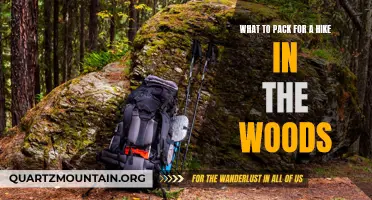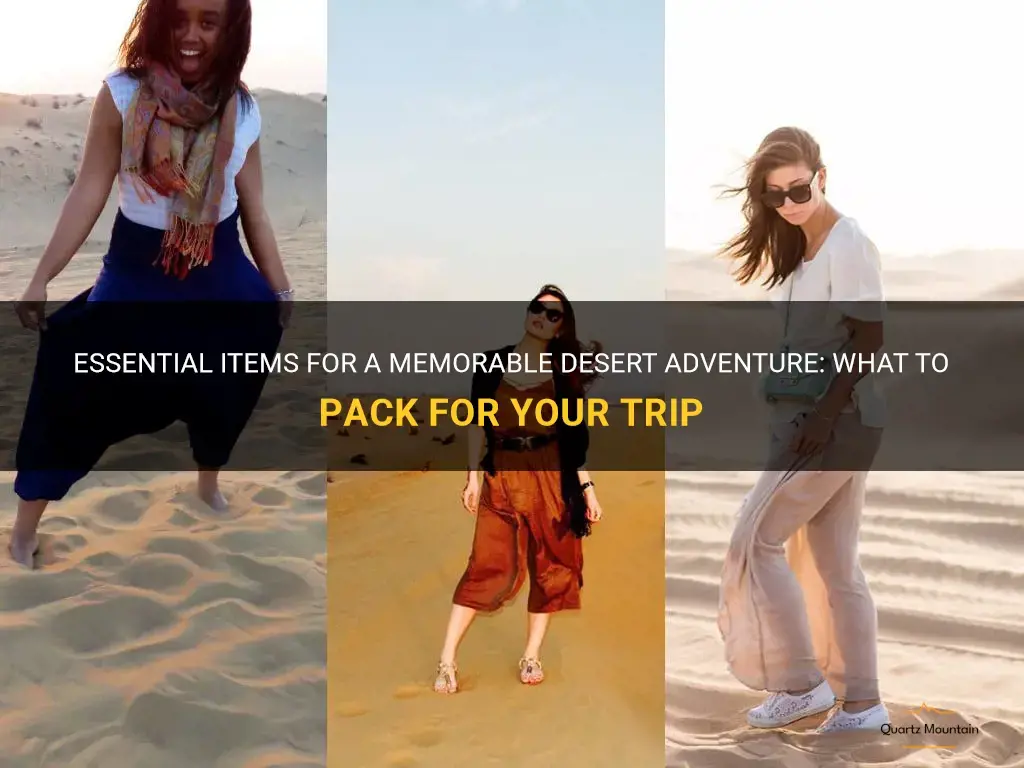
Going on a desert adventure can be an exhilarating experience, with the vast expanse of sand dunes, breathtaking sunsets, and the opportunity to disconnect from the hustle and bustle of everyday life. However, it is important to be prepared for the unique challenges that a desert environment presents. From the scorching heat to the lack of water sources, packing the right essentials can make all the difference between a memorable trip and a miserable one. So, whether you're planning a camel trek through the Sahara or a camping trip in Death Valley, make sure to include these essential items in your desert adventure packing list.
What You'll Learn
- What are the essential items to pack for a desert trip?
- Are there any specific clothing or footwear recommendations for a desert trip?
- What type of sunscreen or sun protection should be packed for a desert trip?
- Are there any recommended hydration and food items to pack for a desert trip?
- Are there any additional items or gear that would be useful to have on a desert trip?

What are the essential items to pack for a desert trip?
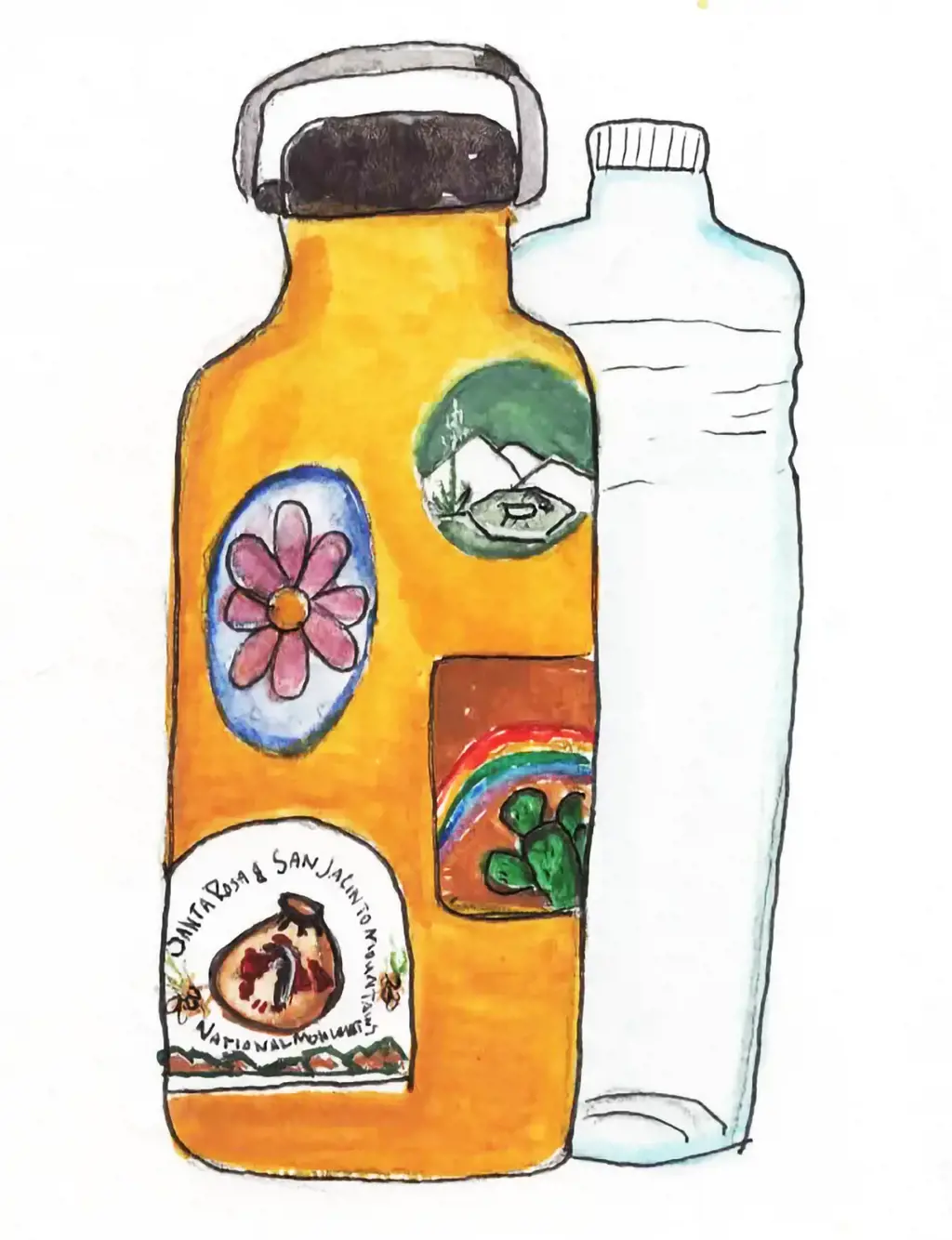
A desert trip can be an exciting and adventurous experience, but it's essential to pack the right items to ensure your safety and comfort. The desert environment can be harsh and unforgiving, so it's important to be prepared for the challenges it presents. Whether you are planning a short day trip or a longer expedition, here are some essential items you should consider packing for your desert adventure.
- Water: Staying hydrated is crucial in a desert environment where temperatures can soar during the day. It's recommended to carry at least one gallon of water per person per day. Make sure to pack enough water to last your entire trip, as finding clean water sources in the desert can be challenging.
- Sun protection: The desert sun can be intense, so it's important to protect your skin and eyes from harmful UV rays. Pack sunscreen with a high SPF, a wide-brimmed hat, sunglasses, and lightweight clothing that covers your arms and legs. Don't forget to reapply sunscreen regularly, especially if you are sweating or swimming.
- Navigation tools: The vast, featureless landscape of the desert can be disorienting, so it's crucial to have reliable navigation tools. Carry a detailed map of the area you'll be exploring, a compass, and a GPS device if possible. Familiarize yourself with the use of these tools before your trip to ensure you can navigate successfully.
- First aid kit: Accidents can happen anywhere, and the desert is no exception. A well-stocked first aid kit is essential to treat minor injuries and provide basic medical care. Include items such as bandages, antiseptic wipes, pain relievers, insect repellent, and any necessary prescription medications.
- Shelter: Even if you're not planning to camp overnight, it's wise to carry some form of shelter. A lightweight tent or tarp can provide shade during the day or protect you from unexpected weather conditions. It can also serve as a refuge if you get lost or injured and need to wait for help.
- Food and cooking supplies: Pack lightweight, non-perishable foods that are easy to prepare. Energy bars, dried fruits, nuts, and jerky are good options. Consider bringing a camp stove and cookware if you plan to cook hot meals. Remember to pack enough food for the duration of your trip, plus some extra in case of emergencies.
- Proper clothing: Desert temperatures can vary greatly between day and night, so it's important to pack appropriate clothing. Opt for lightweight, breathable fabrics during the day to help regulate your body temperature. At night, temperatures can drop significantly, so bring warm layers such as a fleece jacket or thermal underwear.
- Emergency communication devices: In case of emergencies, it's crucial to have a reliable means of communication. Carry a fully charged mobile phone and a backup power bank. Consider investing in a satellite phone or a personal locator beacon (PLB) for added security.
- Tools and equipment: Depending on the nature of your desert adventure, you may need some additional tools and equipment. These can include a knife, a multi-tool, a lightweight shovel, a headlamp or flashlight, and a whistle for signaling for help.
Remember, planning and preparation are key to a successful desert trip. Research the specific challenges and conditions of the desert you'll be visiting, and pack accordingly. Check the weather forecast beforehand, and be prepared for sudden changes in weather conditions. By packing the right items and being well-prepared, you can enjoy a safe and enjoyable desert adventure.
Essential Items to Pack for a Queen Mary 2 Cruise
You may want to see also

Are there any specific clothing or footwear recommendations for a desert trip?
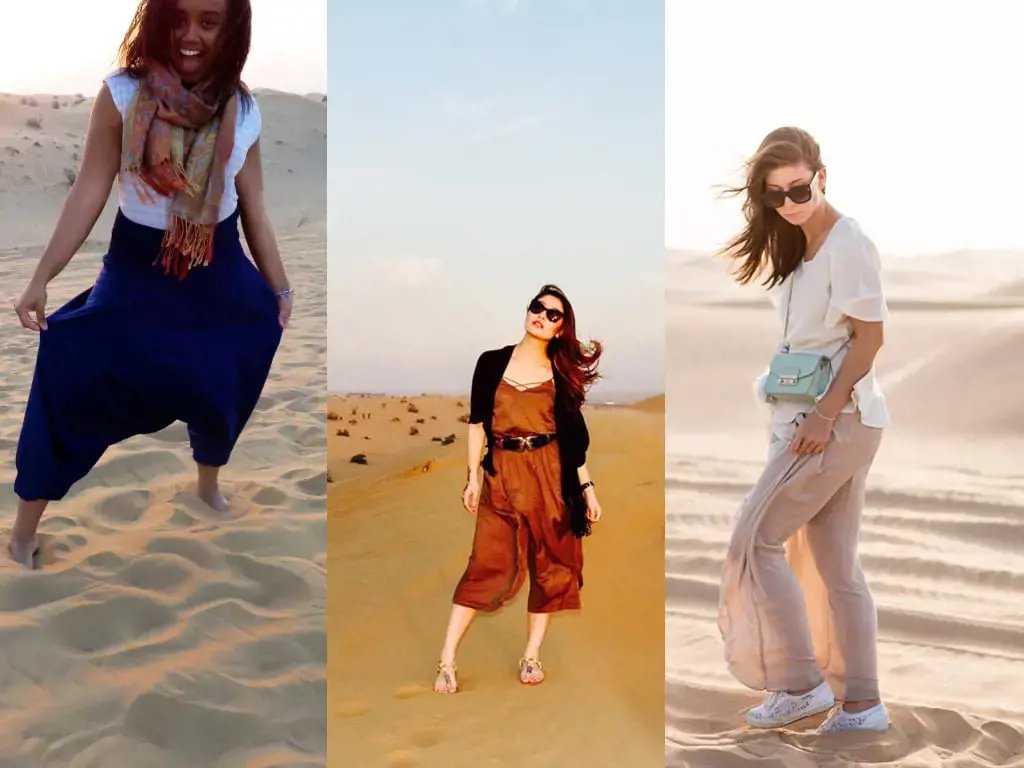
When planning a trip to the desert, it is essential to prioritize comfort and protection from the extreme weather conditions. The desert climate is known for its scorching heat during the day and freezing temperatures at night. To ensure a safe and enjoyable experience, it is crucial to choose the right clothing and footwear for your desert adventure.
Clothing Recommendations:
- Light and Loose-fitting Clothing: Opt for lightweight, breathable fabrics such as cotton or linen to allow air circulation and aid in sweat evaporation. Loose-fitting clothing will help keep you cool and comfortable in the desert heat.
- Long Sleeves and Pants: Despite the temptation to wear short sleeves and shorts, it is advisable to cover up to protect your skin from the harsh sun. Long-sleeved shirts and pants can provide an additional layer of protection against sunburn, heatstroke, and dehydration.
- Neutral Colors: Choose clothing in light and neutral colors, such as beige, khaki, or light gray. These colors reflect sunlight and help to keep your body temperature lower compared to dark-colored clothing.
- Hat and Sunglasses: A wide-brimmed hat is essential to shield your face and neck from direct sunlight. Sunglasses with UV protection will not only protect your eyes but also provide comfort by reducing glare.
Footwear Recommendations:
- Closed-Toe Shoes: Opt for sturdy closed-toe shoes or hiking boots to protect your feet from the hot sand, rocks, and potentially venomous desert creatures. Open-toe footwear should be avoided to prevent sand or debris from getting into your shoes.
- Moisture-Wicking Socks: Choose moisture-wicking socks that will keep your feet dry and comfortable throughout your desert adventure. These socks are designed to wick away sweat and prevent blisters.
- Gaiters: If you plan on hiking or walking through sandy or rocky terrains, consider wearing gaiters. Gaiters are protective coverings worn over your shoes and lower legs, providing an additional layer of protection against sand, pebbles, and thorny plants.
Additional Tips:
- Sunscreen: Apply a broad-spectrum sunscreen with a high SPF to exposed skin to protect yourself from harmful UV rays. Reapply regularly, especially after sweating or swimming.
- Layering: It is essential to have layers of clothing, especially during the desert's extreme temperature fluctuations. The temperature can drop significantly at night, so having a light jacket or sweater will keep you warm.
- Hydration: Carry an ample supply of water and drink regularly to stay hydrated in the desert's dry climate. Dehydration can occur quickly in such conditions, so it is vital to replenish fluids.
- Avoid synthetic materials: Synthetic fabrics such as nylon or polyester can trap heat and moisture, making you feel uncomfortable and sweaty. Stick to natural, breathable fabrics like cotton or linen.
In conclusion, dressing appropriately for a desert trip is crucial for comfort and safety. Opt for loose-fitting, lightweight clothing in neutral colors, and cover your skin with long sleeves and pants. Choose closed-toe shoes or boots, moisture-wicking socks, and consider wearing gaiters for added protection. Don't forget to protect yourself from the sun with a wide-brimmed hat, sunglasses, and sunscreen. By following these recommendations, you can enjoy your desert adventure while staying comfortable and protected.
Essential Items to Pack for a Perfect Summer Beach Vacation
You may want to see also

What type of sunscreen or sun protection should be packed for a desert trip?
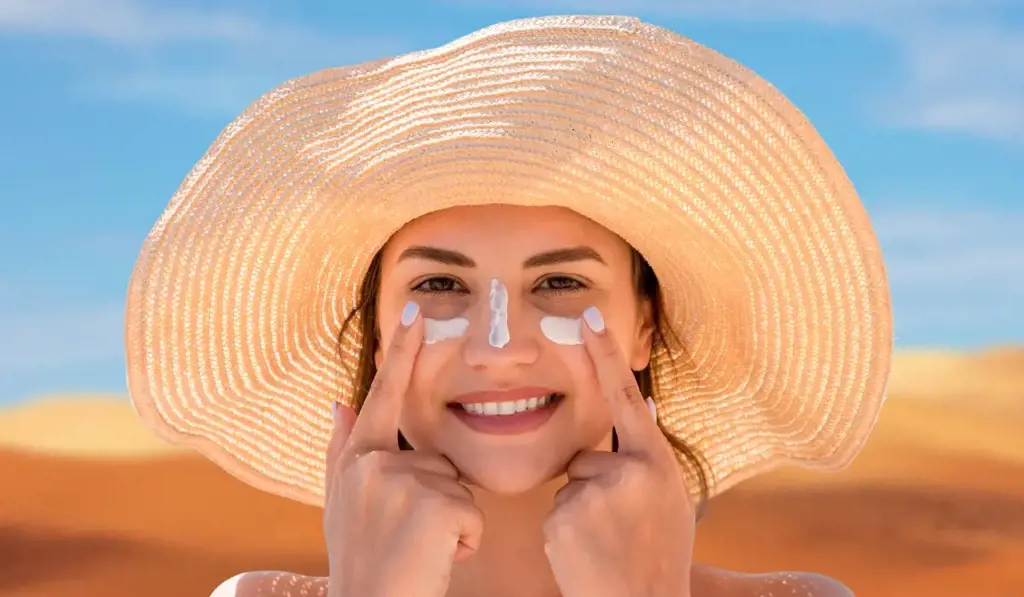
When planning a trip to the desert, it is essential to pack the right type of sunscreen or sun protection to ensure your skin stays protected from the intense desert sun. The desert climate, with its dry air and high altitude, increases the risk of sunburn and skin damage. Here are some tips on what type of sun protection to pack for your desert adventure.
- Use a broad-spectrum sunscreen: Look for a sunscreen that offers broad-spectrum protection, meaning it protects against both UVA and UVB rays. UVA rays can prematurely age the skin, while UVB rays are responsible for sunburn. Broad-spectrum sunscreen will protect your skin from both types of harmful rays.
- Choose a high SPF: When spending time in the desert, where the sun is intense, it's crucial to use a sunscreen with a high sun protection factor (SPF). Doctors recommend using at least SPF 30 or higher to provide adequate protection. SPF indicates the amount of protection the sunscreen offers against UVB rays. Higher SPF values offer more protection.
- Opt for waterproof or sweat-resistant sunscreen: In the desert, you might be engaging in activities that cause you to sweat or come into contact with water. To ensure your sunscreen doesn't wash off easily, choose a waterproof or sweat-resistant sunscreen. This will allow you to stay protected even if you perspire heavily or go for a swim.
- Consider physical sunscreens: Physical sunscreens, also known as mineral sunscreens, contain active ingredients such as zinc oxide or titanium dioxide that reflect and scatter UV rays away from the skin. These sunscreens work immediately upon application and are less likely to cause skin irritation. They are a great option for those with sensitive skin.
- Don't forget to protect your lips: Lips can also get sunburned, so be sure to pack a lip balm with SPF. Look for a lip balm that offers broad-spectrum protection and has a high SPF. Apply it generously throughout the day to prevent dryness and sunburn.
- Use protective clothing: In addition to sunscreen, wearing protective clothing can provide an extra layer of defense against the desert sun. Opt for lightweight and loose-fitting clothing that covers your arms and legs. A wide-brimmed hat can help protect your face, neck, and ears, while sunglasses with UV protection can shield your eyes from harmful rays.
- Seek shade during peak hours: While wearing sunscreen and protective clothing is crucial, it's also essential to seek shade during the peak hours of sun exposure, typically between 10 am and 4 pm. If possible, plan your activities accordingly and try to rest in shaded areas during these hours to reduce your risk of sunburn.
In summary, when packing for a desert trip, it is important to choose a broad-spectrum sunscreen with a high SPF, preferably waterproof or sweat-resistant. Consider physical sunscreens for sensitive skin and don't forget to protect your lips with an SPF lip balm. Additionally, wearing protective clothing, seeking shade, and wearing sunglasses can all help protect you from the intense desert sun. By taking these precautions, you can enjoy your desert adventure while keeping your skin safe and healthy.
Essential Items to Pack for Independent Travel
You may want to see also

Are there any recommended hydration and food items to pack for a desert trip?

When planning a trip to the desert, it is crucial to consider the extreme heat and arid climate. Staying hydrated and nourished is essential for your overall health and well-being. Here are some recommended hydration and food items to pack for a desert trip:
Hydration:
- Water: Water is the most critical item to have on hand when traveling through the desert. The body loses water through sweat, evaporation, and breathing at a much faster rate in desert conditions. It is recommended to carry at least two liters of water per person per day. Consider investing in a sturdy, insulated water bottle to keep your water cool.
- Electrolyte Drinks: In addition to water, it is essential to replenish electrolytes that are lost through perspiration. Electrolyte drinks, such as sports drinks or electrolyte tablets, can help to maintain the body's electrolyte balance. These drinks are particularly important if you engage in strenuous physical activity or spend an extended period outdoors.
- Coconut Water: Coconut water is a natural source of electrolytes and provides hydration as well. It is a refreshing alternative to sports drinks and is packed with essential minerals like potassium and magnesium.
Food:
- Dried Fruits and Nuts: Dried fruits, such as dates, raisins, and apricots, provide a quick source of energy and are packed with essential nutrients. Nuts, like almonds, cashews, and walnuts, offer a good balance of healthy fats, protein, and fiber. They are also lightweight and do not require refrigeration, making them ideal for desert trips.
- Energy Bars: Energy bars are convenient and provide a quick boost of energy. Choose bars that are high in carbohydrates and contain a balance of protein and healthy fats. Look for bars made with natural ingredients and avoid those with excessive sugar or additives.
- Jerky: Jerky, especially beef or turkey jerky, is a lightweight, protein-rich snack that doesn't spoil easily. It is a great option for those who prefer savory snacks over sweet ones.
- Canned Foods: Canned food items, like tuna or beans, can be a good source of protein and can be easily packed. Look for cans with pull tabs for convenience. Remember to pack a can opener if necessary.
- Fresh Fruits and Vegetables: While fresh produce may not be as practical for long desert trips, bringing along some hardy fruits and vegetables can be a refreshing and nutritious addition to your meals. Apples, oranges, carrots, and bell peppers are examples of produce that can survive well under hot conditions.
Remember to pack enough food and water to last throughout your trip, and always check the weather conditions and any regulations regarding food storage in the desert. By staying properly hydrated and nourished, you will be able to fully enjoy your desert adventure while keeping your health a top priority.
What to Pack for an Unforgettable Antarctica Cruise Experience
You may want to see also

Are there any additional items or gear that would be useful to have on a desert trip?
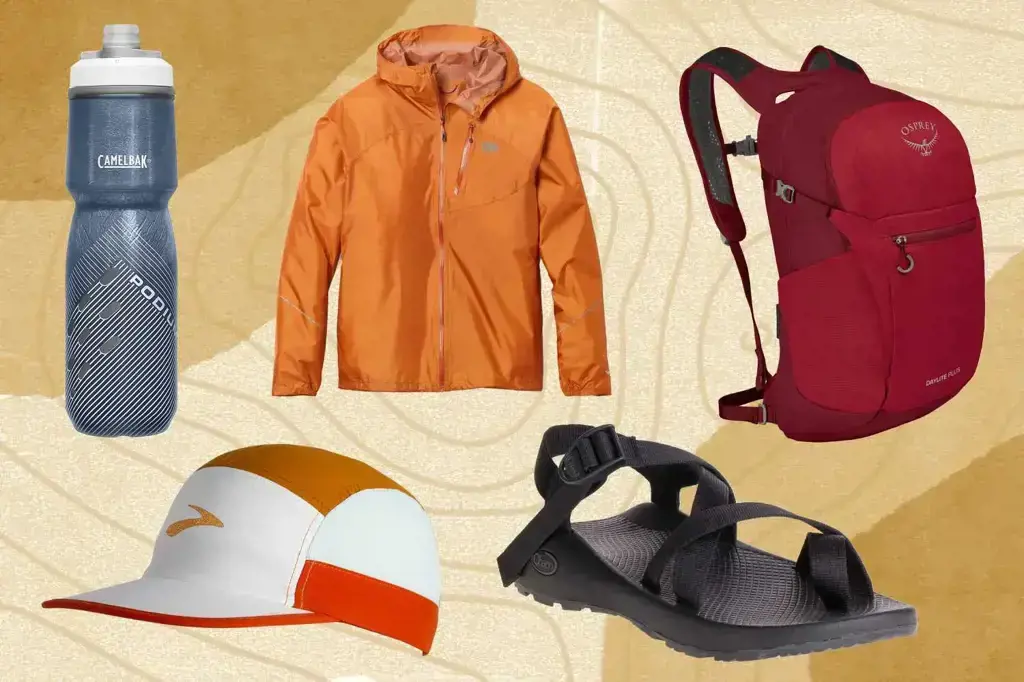
When planning a trip to the desert, it is important to be prepared for the harsh environment and extreme conditions. While there are essential items that should always be brought on a desert trip, there are also additional items and gear that can greatly enhance the experience and ensure your safety. Below are some suggestions for extra items to consider bringing on your desert adventure.
- Sun Protection: The desert sun can be brutal, so it is essential to have adequate sun protection. In addition to sunscreen with a high SPF, consider bringing a wide-brimmed hat, sunglasses with UV protection, and lightweight, long-sleeved clothing to cover exposed skin.
- Hydration Bladder: Staying hydrated is crucial in the desert, where temperatures can soar and water sources may be scarce. To ensure you have easy access to water, consider using a hydration bladder. These backpack-compatible water reservoirs allow you to drink on the go, without having to stop and unpack a water bottle.
- Portable Shade: While the desert is known for its lack of shade, it is important to create your own whenever possible. Consider bringing a lightweight, portable shade structure, such as a pop-up canopy or beach umbrella. This will provide relief from the sun during rest breaks or when enjoying meals.
- GPS Device: Navigating the desert can be challenging, with vast expanses of sand and few landmarks. A GPS device can be a lifesaver in such situations, allowing you to track your location and plan your route. Make sure to bring extra batteries or a portable charger to keep your GPS device powered.
- Desert-Specific First Aid Kit: A regular first aid kit should already be part of your gear, but in the desert, it is important to have a kit specifically tailored to the challenges of this environment. This may include items such as burn ointment, blister treatment, and snake bite supplies. It is also advisable to include a signaling device, such as a whistle or mirror, in case of emergencies.
- Extra Layer for Cold Nights: While the desert can scorch during the day, temperatures can drop drastically at night. To stay warm, pack an extra layer of clothing, such as a lightweight jacket or fleece. This will help ensure a comfortable night's sleep and protect you from hypothermia.
- Sand Gaiters: When hiking through sandy terrain, sand gaiters can be a valuable addition to your gear. These protective coverings fit over your shoes or boots and prevent sand and debris from entering. This not only keeps your feet comfortable but also reduces the risk of blisters and chafing.
- Portable Shower: Hygiene can be a challenge in the desert, especially when camping for multiple days. Consider bringing a portable shower system to stay clean and fresh. These systems often use solar energy to heat the water, making them ideal for desert conditions. Remember to use biodegradable soap and dispose of wastewater responsibly.
In conclusion, while there are essential items to have on a desert trip, there are also additional items and gear that can greatly enhance your experience and safety. From sun protection and hydration to navigational aids and comfort items, the desert presents unique challenges that require careful consideration. By bringing these extra items, you can be better prepared to enjoy and navigate the desert landscape.
Essential Items to Include in Your Flood Preparedness Kit
You may want to see also
Frequently asked questions
When packing for a desert trip, it's important to prioritize lightweight, breathable clothing. Opt for loose-fitting clothes in light colors to help reflect the sun's rays and keep you cool. Long-sleeved shirts and pants made from lightweight, moisture-wicking materials can also provide protection from the sun and help prevent bug bites. Don't forget to pack a wide-brimmed hat, sunglasses, and a bandana or scarf to cover your neck and face from the desert winds.
In addition to appropriate clothing, there are some essential items you should bring for a desert trip. Sunscreen with a high SPF should be at the top of your list to protect your skin from the intense desert sun. You'll also want to pack a refillable water bottle and stay hydrated throughout your trip. Other items to include are a first aid kit, insect repellent, a portable charger for your electronics, a flashlight, and a map or GPS device. It's also a good idea to bring a small towel or wet wipes for quick clean-ups and a lightweight sleeping bag or blanket if camping overnight.
The right footwear is crucial for a desert trip as you'll be navigating various terrains, including sand, rocky terrain, and potentially hot surfaces. It's recommended to wear comfortable, closed-toe shoes or hiking boots that provide ankle support and protect your feet from loose rocks or thorny plants. Look for shoes with good traction and consider ones that are breathable to keep your feet cool. It's also important to break in new footwear before your trip to avoid blisters and discomfort while exploring the desert.
















